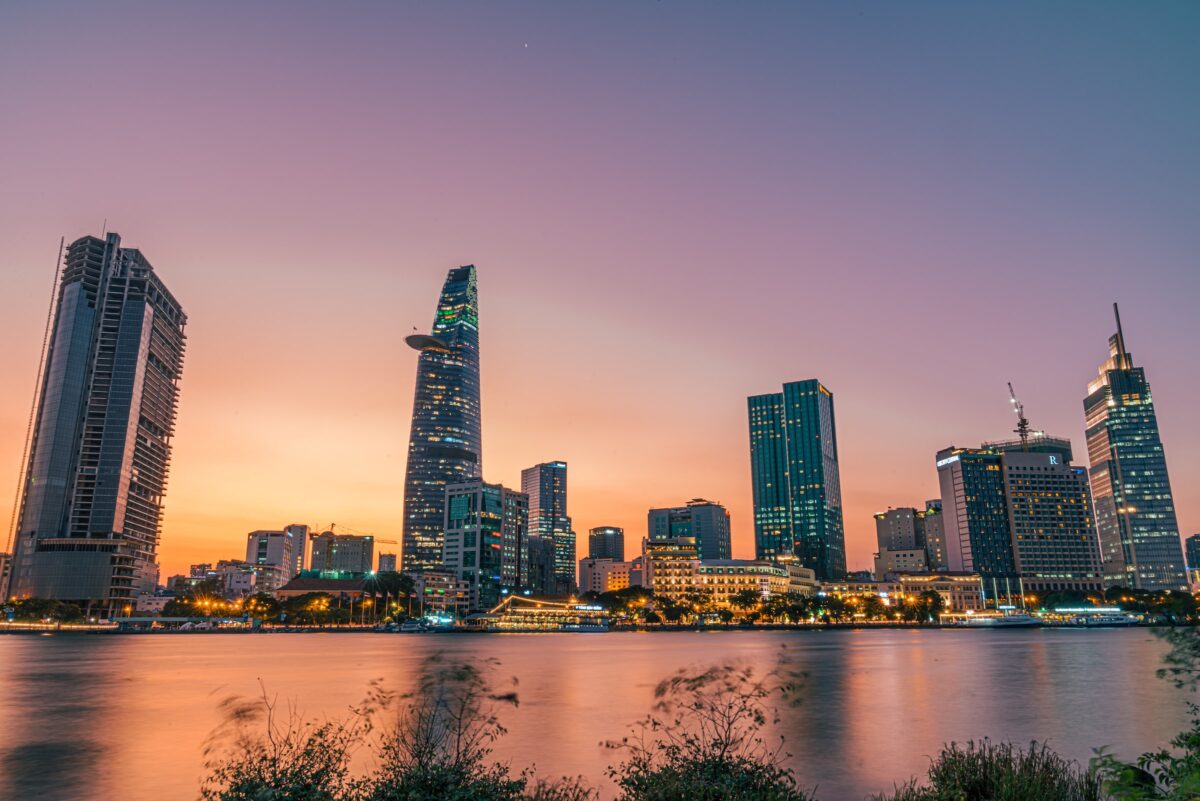Vietnam Commercial Real Estate Goes Green

In line with a series of governmental directives as well as growing corporate and public consciousness about sustainability, Vietnam’s commercial real estate sector is rapidly embracing environmental measures and certifications in the construction of new buildings and actively retrofitting existing buildings to meet the demands of discerning multinational tenants.
A recent study published by Knight Frank, which drew upon green building databases from around the region, found that while Vietnam trailed its APAC neighbours in terms of Tier 1 and Tier 2 certifications for its office space, all signs indicate rapid adoption of these measures in the years to come.
Proportion of Green Accredited Buildings in Select APAC Markets

“This has been on the national agenda since the first Energy Efficiency Building Code was published in 2005,” said Knight Frank Vietnam’s Managing Director Alex Crane. “However, multinational tenants mandating environmental certifications has proven the key commercial driver for building owners to embrace the green wave.”
Vietnamese developers have tended to favour LEED and Green Mark certifications for their Grade A and B office buildings. Within HCMC alone, there are seven LEED-accredited buildings and two Green Mark-accredited buildings with varying degrees of rating, while Hanoi only has three LEED-accredited buildings. Both HCMC and Hanoi are still quite behind when compared to Bangkok, which has up to 25 LEED-accredited office buildings of various ratings, along with five TREES-accredited (Thai’s Rating of Energy and Environmental Sustainability) buildings.
“We expect to see this trend continuing in existing and future pipelines, from green fit-outs from MNCs to retrofitting a whole building to attain green accreditation as Me Linh Point’s recent BCA Green Mark Platinum renovation,” Crane continued. Within HCMC, in terms of future Grade A & B pipeline from now until 2024, five (approximately 214,151 m2 NLA) will be green out of nine buildings (approximately 318,771 m2 NLA).
While the initial investment for green buildings is typically 2-5 percent higher than equivalent non-certified projects, leading green building consultancy GREENVIET has observed that within five years of operation, the building will have repaid the additional construction costs. This aligns with Knight Frank Vietnam’s findings, where we have been tracking rental premium in CBD for green buildings, which can command up to 16%, compared with non-green buildings in Q3 2022.
HCMC CBD Supply and Rents

“In future, projects that want to be considered for Grade A will need green accreditation as occupiers are becoming more aware of rating scores to satisfy their sustainability initiatives and ultimately lower their carbon footprint,” Crane added.
Furthering this commitment to Environment, Sustainability and Governance (ESG) is an increasing concern on the part of employers toward offering workplaces that help to foster employee health and wellness. This includes everything from hospital-grade air-ventilation systems and circadian lighting, to an increasing preference for owners to create rooftop wellness areas for their teams rather than tenant those spaces for hospitality venues.
Download the paper here: https://www.knightfrank.com/research/report-library/esg-and-vietnam-corporate-real-estate-q4-2022-9614.aspx



